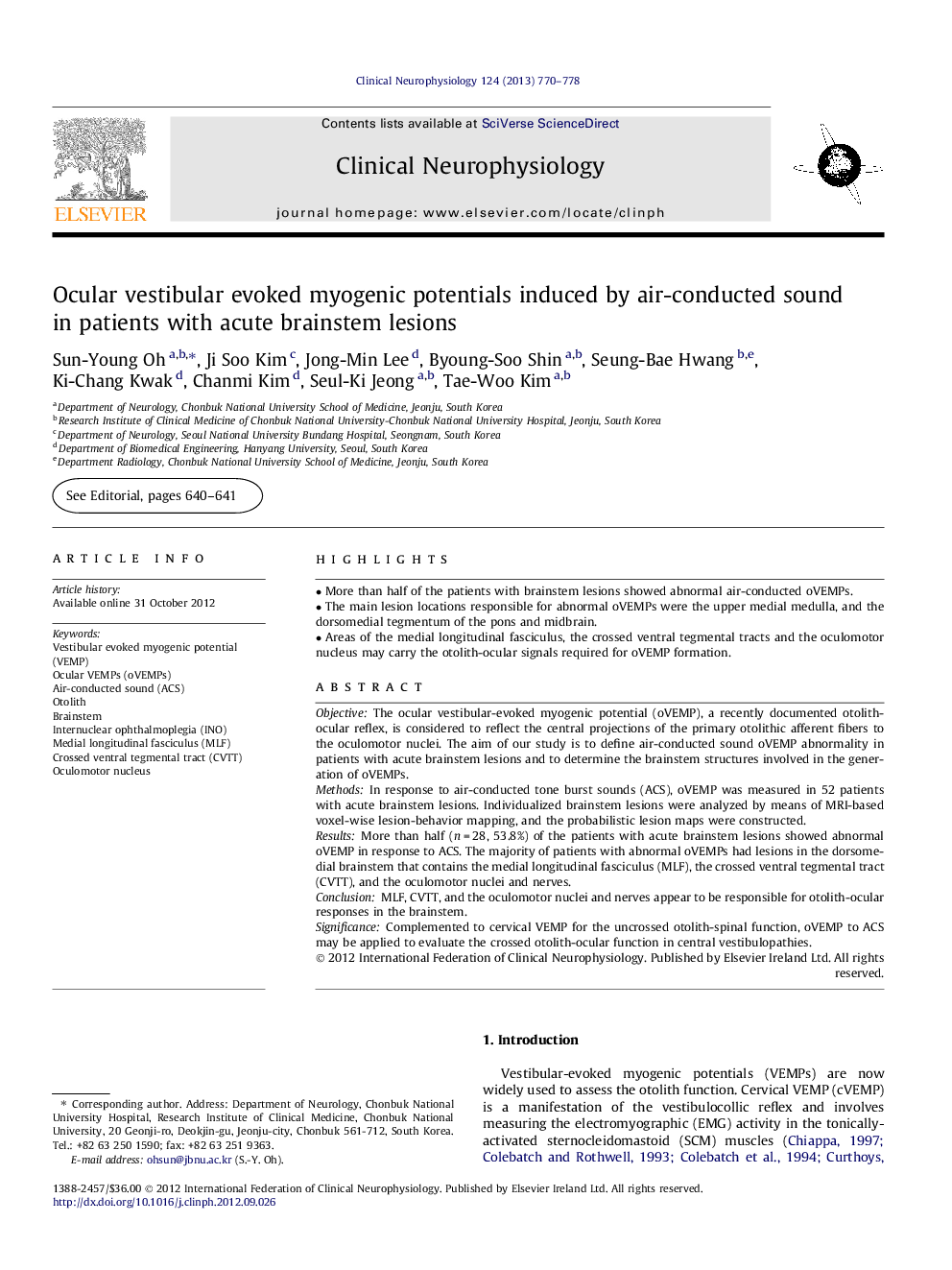| کد مقاله | کد نشریه | سال انتشار | مقاله انگلیسی | نسخه تمام متن |
|---|---|---|---|---|
| 3044187 | 1184993 | 2013 | 9 صفحه PDF | دانلود رایگان |

ObjectiveThe ocular vestibular-evoked myogenic potential (oVEMP), a recently documented otolith-ocular reflex, is considered to reflect the central projections of the primary otolithic afferent fibers to the oculomotor nuclei. The aim of our study is to define air-conducted sound oVEMP abnormality in patients with acute brainstem lesions and to determine the brainstem structures involved in the generation of oVEMPs.MethodsIn response to air-conducted tone burst sounds (ACS), oVEMP was measured in 52 patients with acute brainstem lesions. Individualized brainstem lesions were analyzed by means of MRI-based voxel-wise lesion-behavior mapping, and the probabilistic lesion maps were constructed.ResultsMore than half (n = 28, 53.8%) of the patients with acute brainstem lesions showed abnormal oVEMP in response to ACS. The majority of patients with abnormal oVEMPs had lesions in the dorsomedial brainstem that contains the medial longitudinal fasciculus (MLF), the crossed ventral tegmental tract (CVTT), and the oculomotor nuclei and nerves.ConclusionMLF, CVTT, and the oculomotor nuclei and nerves appear to be responsible for otolith-ocular responses in the brainstem.SignificanceComplemented to cervical VEMP for the uncrossed otolith-spinal function, oVEMP to ACS may be applied to evaluate the crossed otolith-ocular function in central vestibulopathies.
► More than half of the patients with brainstem lesions showed abnormal air-conducted oVEMPs.
► The main lesion locations responsible for abnormal oVEMPs were the upper medial medulla, and the dorsomedial tegmentum of the pons and midbrain.
► Areas of the medial longitudinal fasciculus, the crossed ventral tegmental tracts and the oculomotor nucleus may carry the otolith-ocular signals required for oVEMP formation.
Journal: Clinical Neurophysiology - Volume 124, Issue 4, April 2013, Pages 770–778